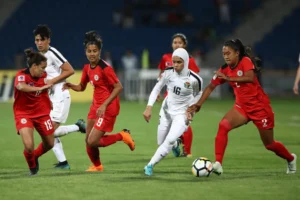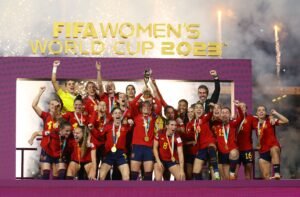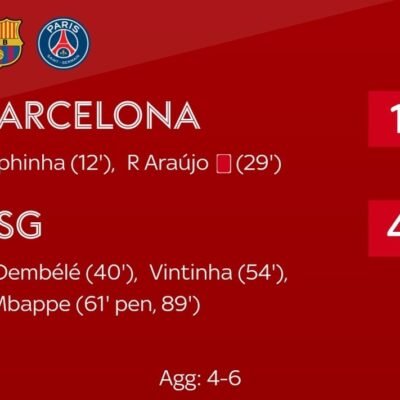
The Rise of Female Football Worldwide and The Quest for Equal Pay
Introduction
The arena of female football is witnessing an unprecedented ascendancy worldwide, capturing the interest and admiration of countless fans and supporters. The exceptional talent, teamwork, and tenacity displayed on the field are drawing in larger audiences and cultivating a robust community of enthusiasts. However, despite the remarkable progress, there lies a significant challenge to overcome – the pursuit of equal pay.
The glaring disparity in compensation between male and female football players is a pressing issue, mirroring the broader societal struggle for gender equality. Despite the considerable advancements in fostering women’s football, the fight for equal remuneration remains a contentious point of debate and action.
The Disparity in Pay
FIFA, the governing body of global football, enshrines principles that oppose gender discrimination, affirming the equal worth and rights of every player.  Despite such constitutional commitments, the reality reflects a stark contrast. Female footballers worldwide face substantial inequities in their pay packages, hindering not just their financial stability but also impacting the overall growth and development of women’s football
Despite such constitutional commitments, the reality reflects a stark contrast. Female footballers worldwide face substantial inequities in their pay packages, hindering not just their financial stability but also impacting the overall growth and development of women’s football
The incongruence in pay is not merely a matter of digits on a paycheck. It symbolizes the undervaluation of female athletes’ skills, efforts, and contributions to the sport and society. It signifies a systemic issue that transcends beyond the football field into the domains of respect, recognition, and rights.
Progress and Challenges
In the midst of this disparity, certain nations and football associations are emerging as champions of change.  The English Football Association (FA) is a notable example, having ensured equal pay for men and women representing England, creating a significant benchmark for gender equality in sports compensation
The English Football Association (FA) is a notable example, having ensured equal pay for men and women representing England, creating a significant benchmark for gender equality in sports compensation
However, the journey towards comprehensive and global pay equality in women’s football is fraught with hurdles. The practical implementation of equal pay principles is limited by various organizational, societal, and economic factors. While associations like the Football Federation Australia (FFA) are making earnest attempts to equalize pay, the constraints of budget, revenue, and funding pose substantial challenges to realizing this goal on a global scale
Diversity in Women’s Football
Another critical dimension in the advancement of women’s football is the enhancement of  diversity within the teams. European teams, while being stalwarts of football, still face a significant diversity gap, indicating a need for more inclusive policies and practices to ensure equal opportunities for players from various backgrounds.
diversity within the teams. European teams, while being stalwarts of football, still face a significant diversity gap, indicating a need for more inclusive policies and practices to ensure equal opportunities for players from various backgrounds.
Diversity, in all its forms, enriches the tapestry of football, infusing it with a multiplicity of skills, styles, and strengths.Embracing diversity not only amplifies the beauty and appeal of the sport but also fortifies the principles of equality, inclusivity, and fairness within the football community.
The Role of Media
The media wields significant influence in shaping perceptions, preferences, and policies. The augmentation in media coverage of women’s football is fostering a more prominent profile and a wider audience for female athletes, enhancing the prospects for equality and growth within the sport.
Increased visibility translates to augmented awareness, support, and sponsorship, catalyzing the financial and developmental impetus for women’s football. It cultivates a more equitable platform, where female athletes receive the recognition, respect, and remuneration they rightfully deserve.
Case Study: Norway
 Norway stands out as a beacon of progress in this journey towards equality. The nation’s footballers have successfully negotiated an equal-pay agreement, ensuring that male and female players earn the same wages for their contributions to the sport and the country. This accomplishment underscores the possibility and practicability of equal pay in football, offering inspiration and insight for other nations and associations worldwide.
Norway stands out as a beacon of progress in this journey towards equality. The nation’s footballers have successfully negotiated an equal-pay agreement, ensuring that male and female players earn the same wages for their contributions to the sport and the country. This accomplishment underscores the possibility and practicability of equal pay in football, offering inspiration and insight for other nations and associations worldwide.
Conclusion
In conclusion, the ascension of women’s football worldwide is an exhilarating and empowering phenomenon. The quest for equal pay within the sport is not just a financial matter but a fundamental affirmation of the equality, dignity, and value of every athlete.
While challenges and obstacles abound, the examples of progress, the voices of advocacy, and the forces of change are gathering momentum. The commitment to equal pay in women’s football is burgeoning, propelled by the collective efforts of players, organizations, and supporters across the globe.
The path ahead may be arduous, but the goal is clear and compelling – ensuring that every female footballer receives equal pay for their talent, toil, and triumphs on the field, heralding a new era of equity, excellence, and empowerment in sports worldwide.






